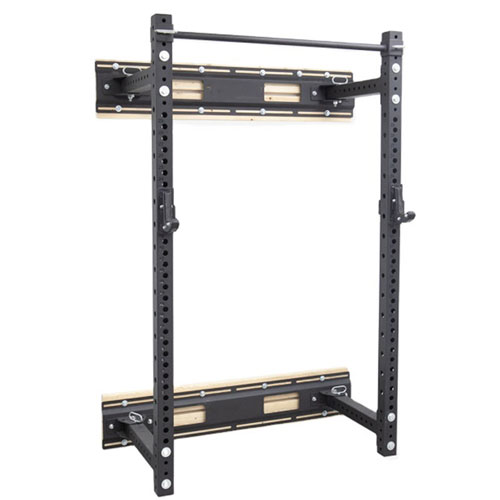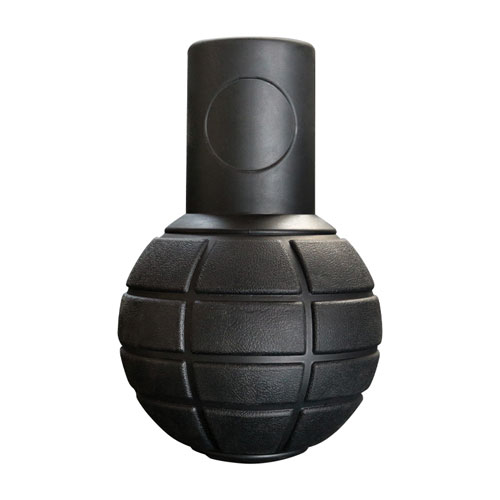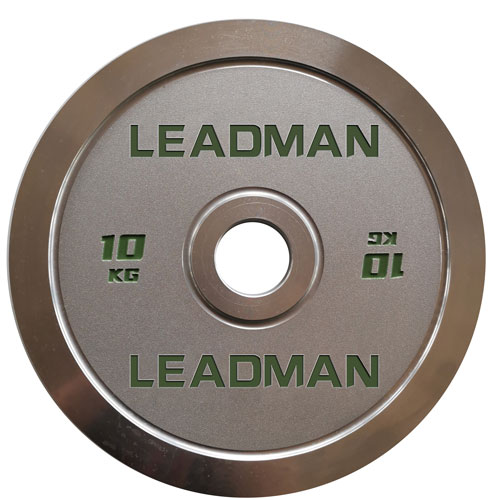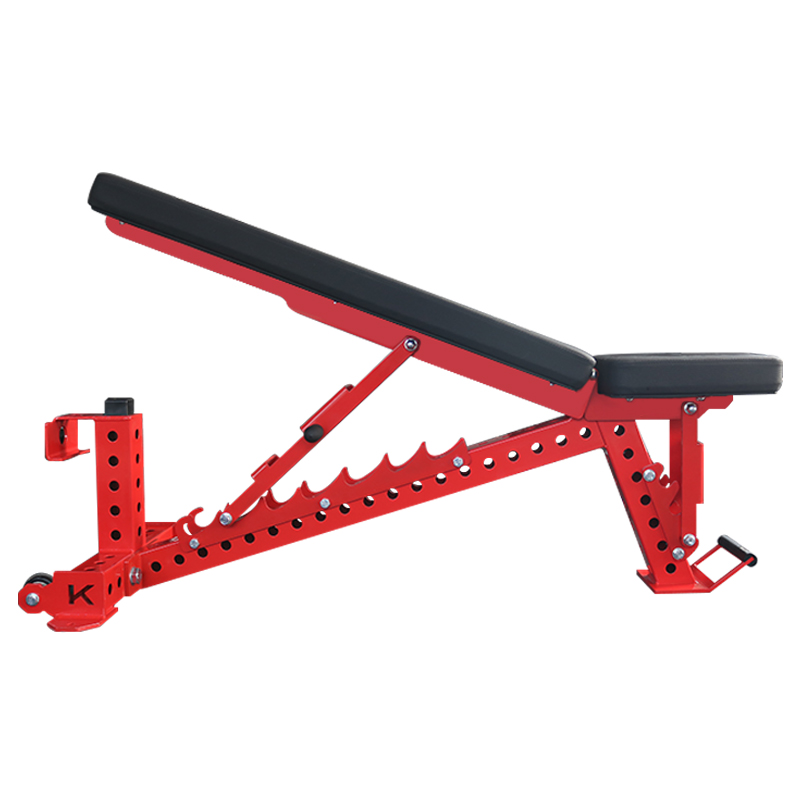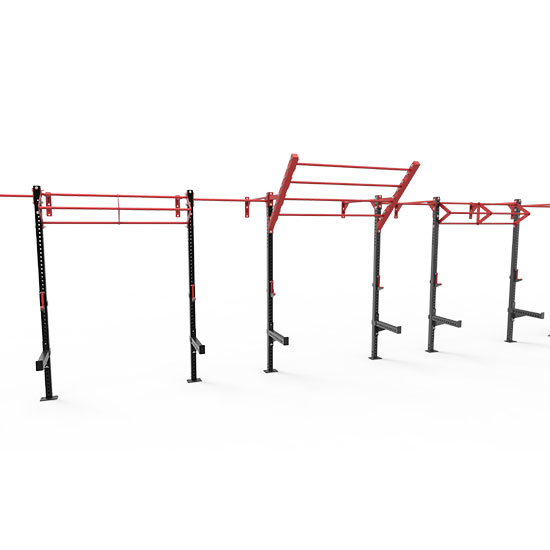Benches for Any Fitness Level
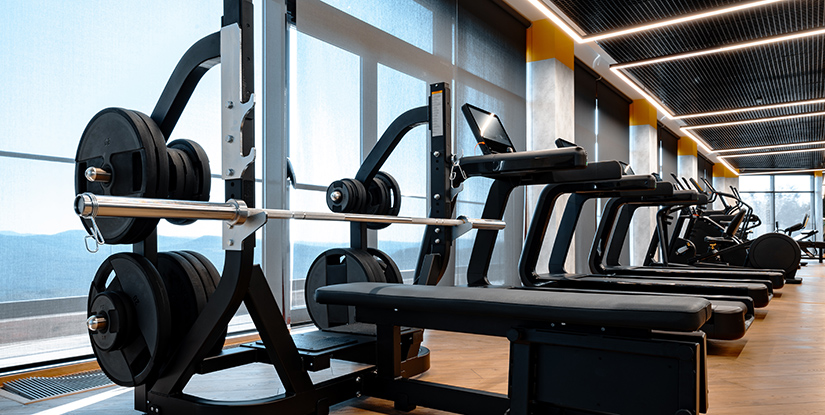
Weightlifting Benches: Choosing the Right One for Your Workout
Weight benches are essential for any home or professional gym, offering a stable base for exercises that target the chest, shoulders, and triceps. They're versatile enough to support a variety of movements, including the classic barbell chest press, dumbbell variations, and flyes.
Benefits of Flat Benches:
- Enhanced Upper Body Strength: Training on a level bench effectively targets the major muscle groups of the upper body, building overall strength and power.
- Improved Balance and Stability: The stable design of a level workout bench encourages users to engage their core and stabilize their body, improving overall balance and coordination.
- Progressive Overload: These benches enable lifters to incrementally increase weight or resistance, allowing for continuous progress and gains.
Targeting Your Upper Chest with Angled Benches
Angled benches, which position the head higher than the feet, shift the emphasis from the lower to the upper chest muscles. This angle effectively isolates the pectoralis major's upper fibers, strengthening and defining the upper chest area.
Benefits of Incline Benches:
- Upper Chest Development: These benches specifically target the upper chest, shaping and developing this often neglected muscle group.
Improved Shoulder Stability: The angled position engages the shoulder muscles in a unique way, promoting stability and potentially reducing the risk of certain shoulder injuries (consult with a professional).
- Ergonomic Design: Incline benches offer a more comfortable position for individuals with limited shoulder mobility or shoulder pain.
Sculpting Your Lower Chest with Decline Benches
Downward-sloping benches position the head below the feet, isolating and targeting the lower fibers of the pectoralis major. This angle challenges the lower chest, enhancing strength and definition in this area.
Benefits of Decline Benches:
- Lower Chest Isolation: Using a decline effectively isolates the lower chest muscles, allowing for specific development and definition.
- Enhanced Push Strength: The downward angle can amplify the effort required for pushing movements, potentially improving overall strength and power output by engaging different muscle fibers.
- Reduced Upper Body Dominance: Decline benches shift the focus away from the upper chest and triceps, minimizing their dominance during chest exercises.
Sculpting Your Lower Chest with Decline Benches
Adjustable benches combine the benefits of multiple bench types into a single versatile unit. These benches allow for customization of the incline angle, enabling a vast range of exercises that target different muscle groups and movement patterns.
Benefits of Adjustable Benches:
- All-in-One Solution: Adjustable benches eliminate the need for separate benches, offering a comprehensive and space-saving solution.
- Personalized Workouts: The adjustable feature allows for tailored workouts, accommodating individual preferences and fitness levels.
- Progression and Variety: Adjustable benches facilitate progressive overload and exercise variation, preventing plateaus and keeping workouts engaging.
Bench Press: Master the Chest-Building Movement
The bench press is a fundamental chest-building exercise that engages the pectorals, triceps, and shoulders. Performed on a flat bench, the bench press involves lowering and pressing a barbell or dumbbells from an overhead position to chest level.
Mastering the Bench Press:
- Proper Form: Maintain a neutral spine, grip the bar slightly outside shoulder-width, and lower the weight to touch the chest before pressing back up.
- Optimal Weight: Choose a weight that allows for 8-12 repetitions with strict form, focusing on quality over quantity.
- Progression: Gradually increase weight or repetitions over time, following the principles of progressive overload.
Incline Press: Enhancing Upper Chest Strength
The incline press follows the same principles as the bench press but is performed on an incline bench. This angle isolates the upper chest muscles, enhancing strength and development in that area.
Executing the Incline Press:
- Positioning: Place your head higher than your feet on an incline bench, adjusting the angle to target the upper chest.
- Grip: Maintain a slightly wider grip than shoulder-width, ensuring the elbows flare out slightly.
- Movement: Lower the weight to the upper chest and press back up to the starting position, focusing on controlling the movement throughout.
Decline Press: Isolating the Lower Chest
The decline press targets the lower chest muscles effectively by lowering the head below the feet on a decline bench. This angle places more emphasis on the lower fibers of the pectoralis major.
Performing the Decline Press:
- Bench Setup: Position yourself on a decline bench, ensuring your head is lower than your feet.
- Proper Form: Maintain a neutral spine, grip the bar slightly wider than shoulder-width, and lower the weight to the lower chest.
- Controlled Movement: Slowly lower the weight and press back up to the starting position, emphasizing proper form and muscle engagement.
Flyes: Shaping and Defining the Pecs
Flyes are an isolation exercise that effectively targets the pectoralis major and minor muscles, shaping and defining the chest. Performed on a flat or incline bench, flyes involve raising and lowering dumbbells or cables while maintaining a slight bend in the elbows.
Executing Flyes:
- Positioning: Lie down on a bench and hold dumbbells or attach a cable to the handles.
- Movement: Simultaneously lift your arms out to the sides, keeping a slight bend in the elbows, and lower them back down in a controlled manner.
- Focus: Engage the chest muscles throughout the movement and squeeze the pecs at the top of each rep.
Frequently Asked Questions
Q: How do I choose the right bench for my needs?
Consider your fitness level, primary exercise goals, and available space. Adjustable benches offer versatility, while specific benches (flat, incline, or decline) focus on particular muscle groups.
Q: What is the best exercise for building chest strength?
The bench press is the classic chest-building exercise, engaging multiple upper body muscle groups effectively. Proper form and progressive overload are crucial for maximizing results.
Q: How often should I bench press?
Optimal bench press frequency depends on individual goals and recovery capacity. Aim for 1-3 sessions per week, allowing adequate rest between workouts for muscle recovery and growth.
Q: What are common mistakes to avoid when using a bench?
- Excessive Lower Back Arching: Maintain a neutral spine to prevent excessive pressure on the lower back.
- Shoulder Rolling Forward: Keep shoulders retracted and down to stabilize the shoulder joint.
- Inconsistent Range of Motion: Lower the weight to chest level and fully extend the arms at the top to maximize muscle engagement.
Q: Can I use a bench without weights?
Yes, bodyweight exercises such as push-ups and triceps dips can be performed on a bench. These movements effectively engage upper body muscles using body weight as resistance.

